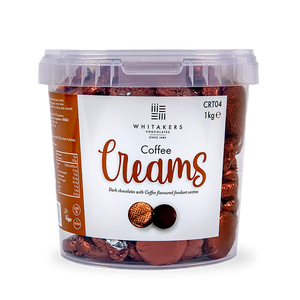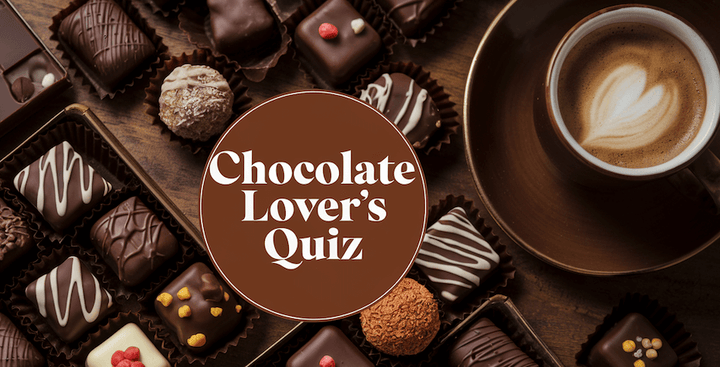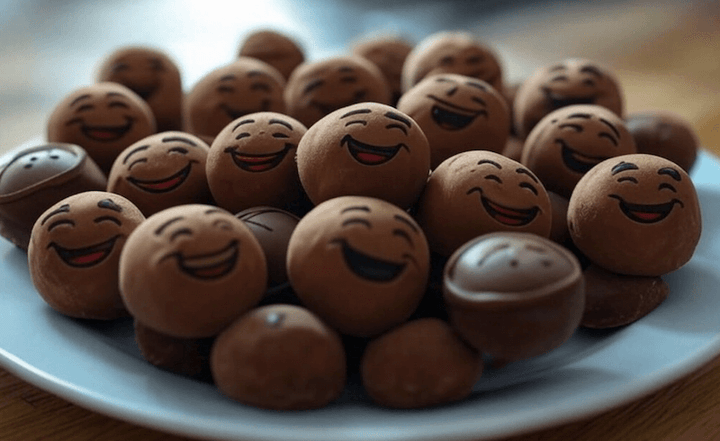In the world of chocolate, there's a new player that's been steadily gaining attention – raw chocolate.
But what exactly is this newcomer, and how does it differ from the more traditional forms of our favourite sweet treat?
In this post, we will look into the world of raw chocolate, seeking to demystify this unique product.
We'll explore its origins, how it's made, and its purported health benefits.
We'll also discuss how its taste and texture compare to regular chocolate and provide guidance on how you can enjoy this intriguing variety.
What is Raw Chocolate?
Raw chocolate is a type of chocolate that's made from unroasted cacao beans or sometimes minimally processed cacao at low temperatures.
This is in contrast to conventional chocolate, where the cacao beans are roasted.
The process of keeping the cacao raw is believed to preserve more of its natural nutrients.
Raw chocolate often also includes other natural and unprocessed ingredients, such as raw sugar, making it a popular choice among those seeking less processed or potentially healthier alternatives to traditional chocolate.
(Click here if you are interested in reading about: What Type of Chocolate is Dairy Free?)
What is Raw Chocolate Powder?
Raw chocolate powder, often known as raw cacao powder, is made from cold-pressed, unroasted cocoa beans.
The process ensures that the living enzymes in the cocoa are preserved, but it removes the fat (cacao butter).
The result is a highly nutritious powder, loaded with beneficial compounds such as flavonoids, and has a complex, rich chocolate flavour.
This is different from traditional cocoa powder, where the beans are roasted at high temperatures before being processed.
Raw cacao powder is typically used in the same way as conventional cocoa powder — in baking, smoothies, and other recipes — but it's often seen as a healthier alternative because of its higher nutrient content.
(Before you go on, click here if you want to learn how to grate chocolate).
How Many Calories in Raw Chocolate?
The calorie content of raw chocolate can vary depending on the specific recipe or brand, as different producers may use different ingredients and ratios.
However, as a rough estimate, raw chocolate typically contains around 550-600 calories per 100 grams.
It's worth noting that while raw chocolate may have a similar caloric content to regular chocolate, it often contains more fibre and nutrients due to the minimal processing of the cacao beans.
Always check the nutritional information on the packaging for the most accurate information.
(Take a look at this post for some ideas for: What To Do With Leftover Melted Chocolate?)
What Nutrients Are in Raw Chocolate?
Raw chocolate, often created from minimally processed cacao beans, is lauded for its nutrient richness.
Here are some of the key nutrients that raw chocolate typically contains:
-
Magnesium: This mineral is essential for numerous bodily functions, including nerve transmission, muscle relaxation, and energy production.
-
Antioxidants: Raw chocolate is rich in flavonoids, a type of antioxidant that helps protect the body from damage by free radicals.
-
Fibre: The unprocessed cacao beans used in raw chocolate offer a good amount of dietary fibre.
-
Iron: Raw chocolate is a surprisingly good source of plant-based iron.
-
Potassium: This essential mineral helps maintain fluid balance, nerve signals, and muscle contractions.
-
Phosphorus: This nutrient plays a vital role in the formation of bones and teeth.
-
Theobromine: This stimulant, similar to caffeine, can boost your mood and energy levels.
-
Healthy fats: Raw chocolate contains monounsaturated fats, similar to those found in avocados, which are considered heart-healthy.
Remember, while raw chocolate does offer these nutrients, it's also calorie-dense, so it's important to consume it in moderation as part of a balanced diet.
Related Post: What Is Theobromine?
What Does Raw Chocolate Taste Like?
Raw chocolate has a distinctive taste that's quite different from the more familiar flavours of traditional chocolate.
It's typically more intense and complex, with a pronounced bitter edge.
The lack of roasting allows for the preservation of the cacao bean's inherent flavours, which can include hints of berries, nuts, or coffee, depending on the specific variety of the bean.
The texture of raw chocolate can also be different from that of regular chocolate.
It might be less smooth and more grainy, because it hasn't been conched – a process used in traditional chocolate-making to develop a silky texture.
Some find the taste and texture of raw chocolate to be an acquired one.
However, those who appreciate the natural, robust and complex flavours of the cacao often find raw chocolate to be a rewarding and enjoyable experience.
Related Post: Chocolate Conching?
How to Make Raw Chocolate From Cacao Beans
Making raw chocolate from cacao beans at home is quite a process, but it can be an interesting and rewarding experience.
Here's a basic method:
Ingredients:
- 100g raw cacao beans
- 100g raw cacao butter
- 50g raw honey or another sweetener of your choice
- A pinch of sea salt
Instructions:
-
Clean and winnow the cacao beans: Remove any remaining husk or debris from the cacao beans. This process is known as winnowing.
-
Grind the cacao beans: You can use a coffee grinder for this. Grind until you get a fine cacao powder. This may take a few minutes and it's important to give your grinder breaks to prevent it from overheating.
-
Melt the cacao butter: Place the cacao butter in a heat-proof bowl over a pan of simmering water (make sure the bowl doesn't touch the water). Stir until it's completely melted.
-
Mix the ingredients: Add the ground cacao beans, sweetener, and a pinch of salt to the melted cacao butter. Stir well to combine.
-
Mould the chocolate: Pour the chocolate mixture into a silicone chocolate mould or an ice cube tray.
-
Chill the chocolate: Place the mould in the fridge for a couple of hours, or until the chocolate is completely set.
-
Enjoy: Once the chocolate is set, it's ready to enjoy! Store any leftovers in an airtight container in the fridge.
This is a basic recipe, and you can customise it to suit your taste.
For instance, you might want to add vanilla extract for additional flavour, or mix in some chopped nuts or dried fruits for texture.
Remember that raw chocolate will taste different from traditional chocolate, but that's part of its charm!
Is Raw Chocolate Good for You?
Raw chocolate, compared to conventional chocolate, retains more of the natural nutrients found in cacao beans due to the minimal processing it undergoes.
As a result, it's high in antioxidants like flavonoids, as well as other nutrients such as magnesium, iron, potassium, and fibre.
However, it's essential to remember that while raw chocolate does have health benefits, it should still be consumed in moderation.
This is because it is calorie-dense and can be high in fat and sugar, especially if sweeteners are added.
Overconsumption of any form of chocolate can contribute to weight gain and other health issues.
Furthermore, the high levels of theobromine found in raw cacao can be a stimulant and may cause restlessness and sleep disturbances in some people, particularly if consumed in large amounts or late in the day.
As with all foods, the key to including raw chocolate in your diet is balance and moderation.
If you're particularly health-conscious, look for raw chocolate that is low in added sugars and consider it as an occasional treat rather than a daily indulgence.
As always, if you have any specific dietary concerns or health conditions, it's best to consult a healthcare professional before making significant changes to your diet.
Is it Safe to Eat Raw Chocolate?
Yes, it is generally safe to eat raw chocolate.
However, like any food, the quality and sourcing of ingredients can influence its safety.
It's important to purchase raw chocolate or raw cacao products from reputable sources that adhere to good manufacturing practices to ensure the product is free from contaminants.
Raw chocolate is made from cacao beans that are not roasted, but they should still be properly fermented and dried to kill any bacteria.
Keep in mind that the high levels of theobromine found in raw cacao can act as a stimulant, which may cause discomfort in some people, particularly if consumed in large amounts or late in the day.
As always, moderation is key.
While raw chocolate is generally safe for most people, it is high in calories and can contribute to weight gain if eaten in excess.
If you have any health conditions or are pregnant, it's best to consult with a healthcare professional before consuming raw chocolate or making any significant changes to your diet.
Final Notes On Raw Chocolate
As we wrap up our exploration of raw chocolate, it's clear that this intriguing treat brings a fresh and health-conscious spin to the timeless delight of chocolate.
It offers a more direct route to experiencing the rich, complex flavours of the cacao bean, and serves as a nutrient-dense alternative to traditional chocolate.
Raw chocolate, crafted from minimally processed cacao beans, invites us to consider the origins of our food and the impact that different processing methods have on taste, texture and nutritional content.
It encourages us to pay attention to the quality and sourcing of ingredients, which is always a step in the right direction.
Yet, it's important to remember that while raw chocolate has many positive attributes, it is, like all foods, best enjoyed in moderation.
High in calories and potentially stimulating, raw chocolate should be consumed judiciously as part of a balanced diet.
All in all, raw chocolate offers a fascinating new avenue for chocolate lovers to explore, one that brings us closer to the roots of one of the world's most beloved treats.
Whether you choose to stick with traditional chocolate, explore the world of raw chocolate, or enjoy a bit of both, there's no doubt that the world of chocolate is a deliciously diverse and delightful one.






















